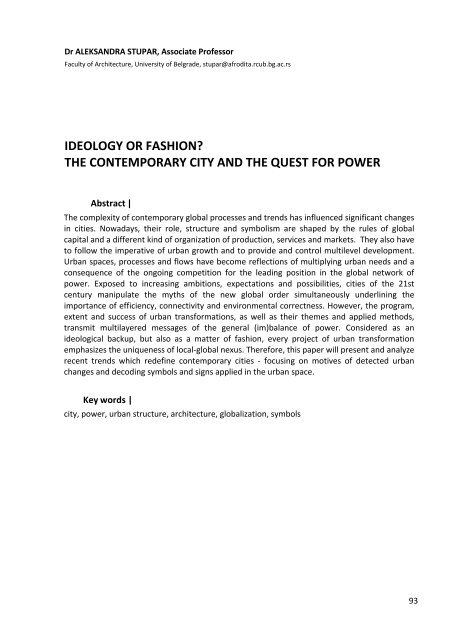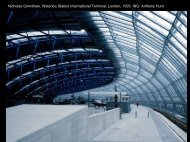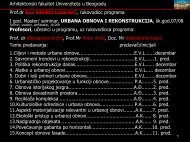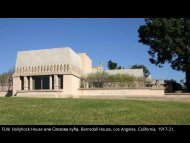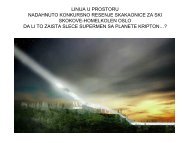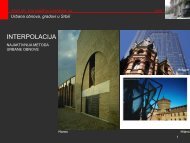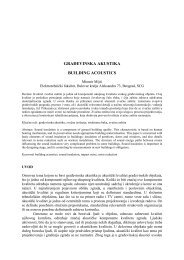Architecture and Ideology
Architecture and Ideology
Architecture and Ideology
Create successful ePaper yourself
Turn your PDF publications into a flip-book with our unique Google optimized e-Paper software.
Dr ALEKSANDRA STUPAR, Associate Professor<br />
Faculty of <strong>Architecture</strong>, University of Belgrade, stupar@afrodita.rcub.bg.ac.rs<br />
IDEOLOGY OR FASHION?<br />
THE CONTEMPORARY CITY AND THE QUEST FOR POWER<br />
Abstract |<br />
The complexity of contemporary global processes <strong>and</strong> trends has influenced significant changes<br />
in cities. Nowadays, their role, structure <strong>and</strong> symbolism are shaped by the rules of global<br />
capital <strong>and</strong> a different kind of organization of production, services <strong>and</strong> markets. They also have<br />
to follow the imperative of urban growth <strong>and</strong> to provide <strong>and</strong> control multilevel development.<br />
Urban spaces, processes <strong>and</strong> flows have become reflections of multiplying urban needs <strong>and</strong> a<br />
consequence of the ongoing competition for the leading position in the global network of<br />
power. Exposed to increasing ambitions, expectations <strong>and</strong> possibilities, cities of the 21st<br />
century manipulate the myths of the new global order simultaneously underlining the<br />
importance of efficiency, connectivity <strong>and</strong> environmental correctness. However, the program,<br />
extent <strong>and</strong> success of urban transformations, as well as their themes <strong>and</strong> applied methods,<br />
transmit multilayered messages of the general (im)balance of power. Considered as an<br />
ideological backup, but also as a matter of fashion, every project of urban transformation<br />
emphasizes the uniqueness of local‐global nexus. Therefore, this paper will present <strong>and</strong> analyze<br />
recent trends which redefine contemporary cities ‐ focusing on motives of detected urban<br />
changes <strong>and</strong> decoding symbols <strong>and</strong> signs applied in the urban space.<br />
Key words |<br />
city, power, urban structure, architecture, globalization, symbols<br />
93


